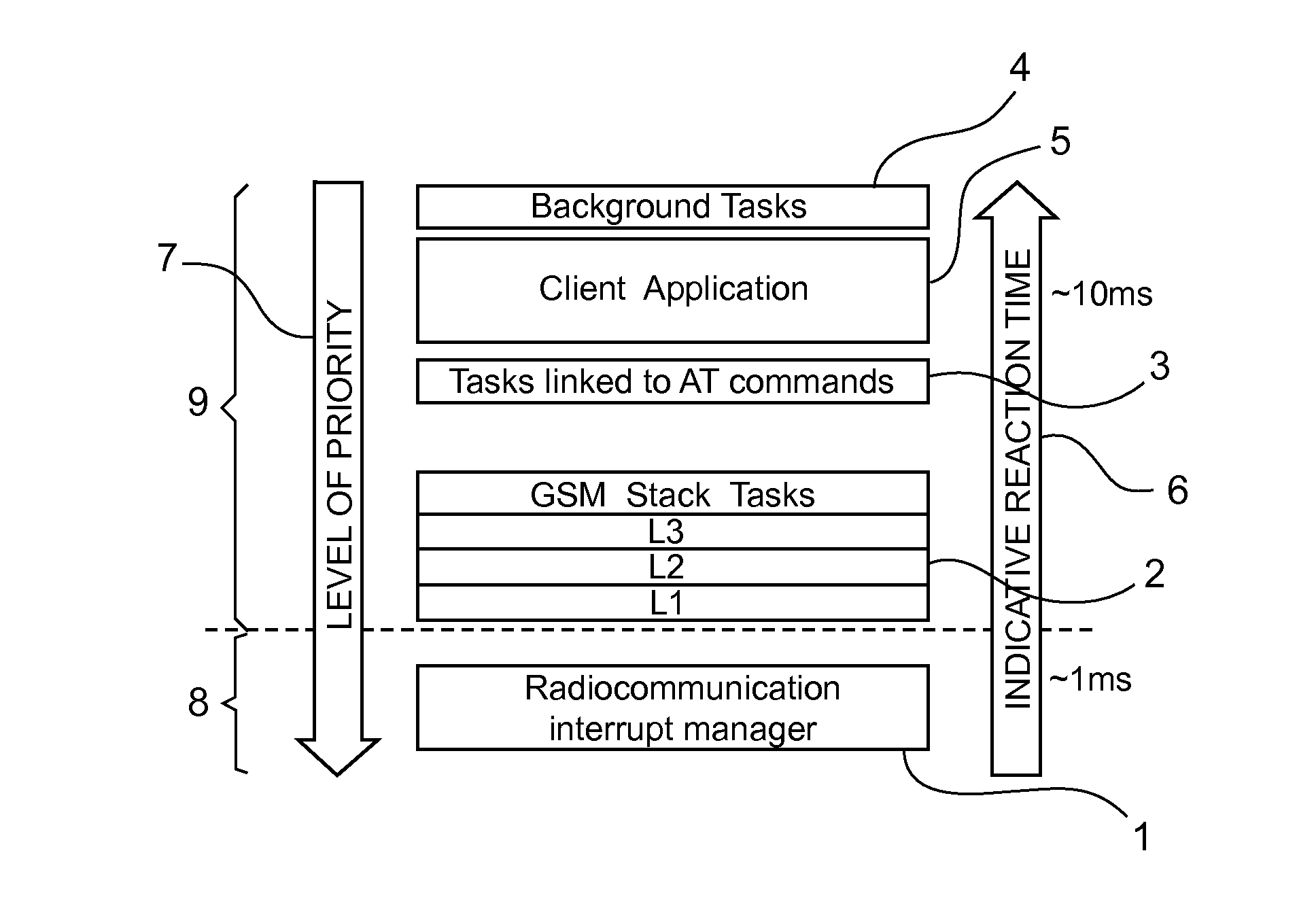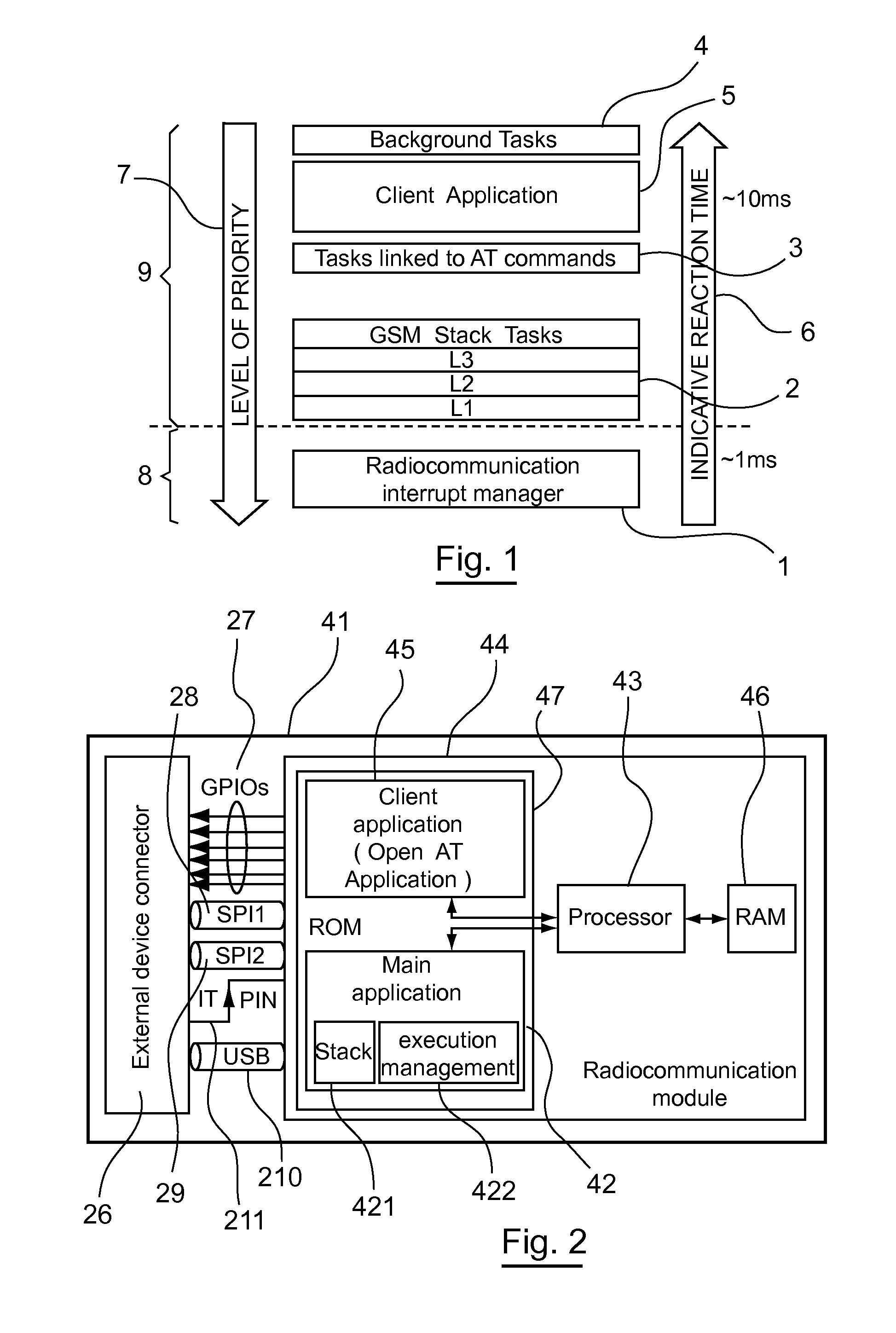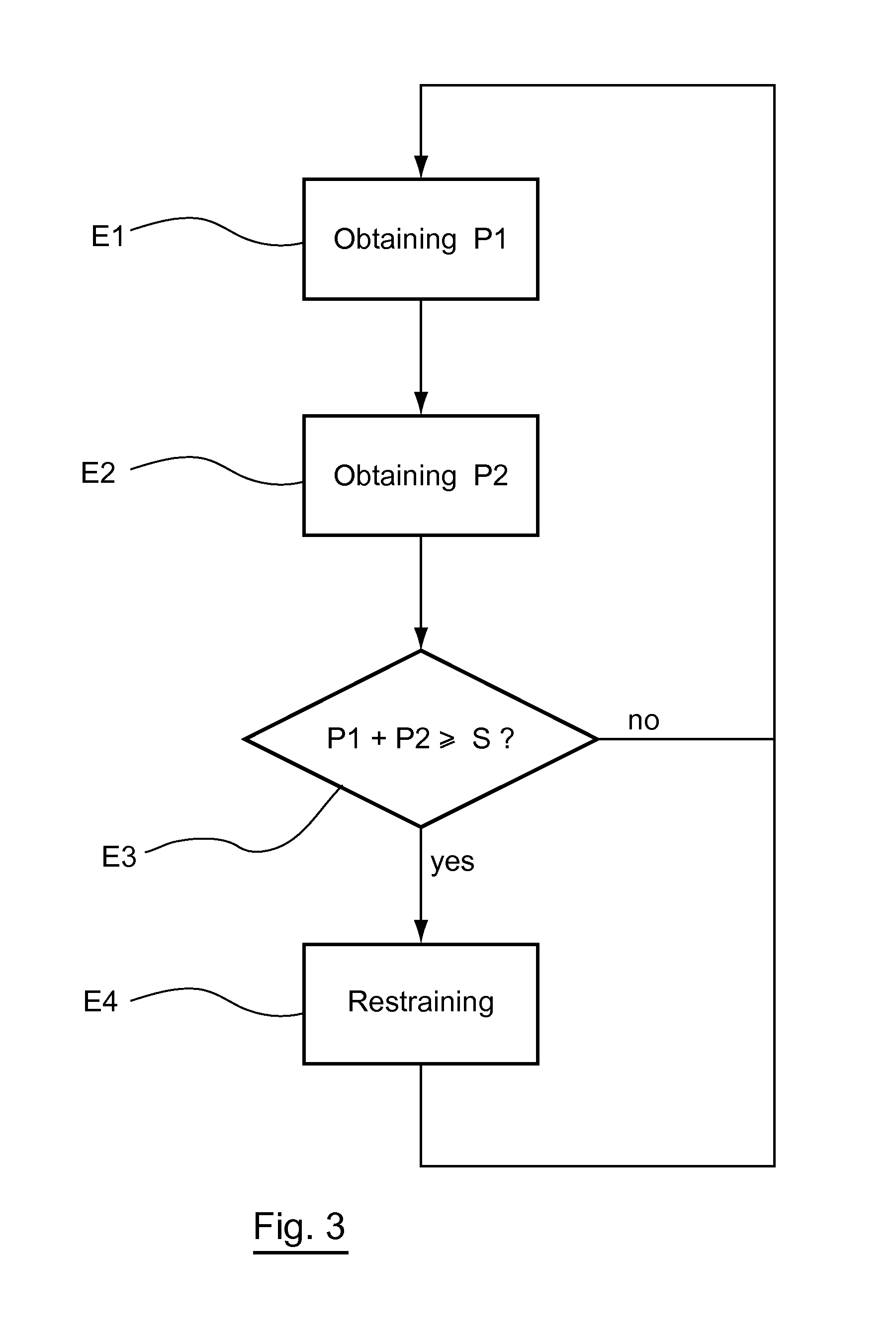One of the problems of modules that provide abilities to embark the applications of their clients is that no guarantee on the available computing power is provided to the client in an optimized way.
This can cause problems when the client application has calculations to perform and / or operations to carry out within a given period of time in order to not lose information (in particular when the latter is relayed in real time).
To do this, it must carry out this
processing with a given period of time (in our example, less than 10 milliseconds) otherwise after a certain period of time there will no longer be enough memory to store the raw values (before calculation), and some will be lost, which could be highly problematic and jeopardize the
system as a whole.
The difficulty is that the
GSM stack needs a computing power that varies according to the different states that it may have:off (disconnected): the module is not connected to the
GSM / GPRS network and as such cannot communicate;searching for network: the module has lost the synchronization with the network (start-up / out of coverage, etc.) but is looking for a network whereon it can synchronize;at rest (idle): the module is connected to the GSM / GPRS network.
As such, overdimensioning the computing power of an onboard
system comprising a GSM stack as a solution for overcoming the computing power peaks consumed by the GSM stack is not a viable solution for an autonomous onboard system since it results in a substantial overcost for the overall solution (the notion of optimal computing power is therefore primordial during the designing of an onboard system in order to not generate redhibitory overcosts).
The most important point is that it is impossible for the client application to know before the phase the needs in terms of power for the
protocol stack.
For example, when searching for a network, there is no way for the client application to predict the moment when the system is going to find it and as such the load of the computing power required for the synchronization with the
cellular network and consequently the computing power that will be lacking when this synchronization takes place, nor even the moment when this computing power will be lacking.
Likewise, the loss of synchronization network (for example when the GSM cells are too far away to be detected by the onboard system) results in a request for additional computing power from the
protocol stack and could therefore
impact the available computing power for the client application during the network resynchronization, with the dangers that this includes in terms of loss of data if this data is not processed rapidly enough.
As such, in an onboard system comprising a GSM / GPRS stack, most of the events processed by the stack and which
impact the computing power left free to the client application cannot be predicted by the client application, and can as such
impact the proper operation of the system as a whole.
In sum, the execution of a radiocommunication stack (for example a GSM / GPRS stack) requires considerable computing power that varies according to the states of this stack, with the risk of losing the synchronization with the network (and therefore to no longer be able to make / receive calls, send / receive SMSs, USSD, etc.).
According to a first known technique, not knowing what impact the execution of the client applications will have on the proper operation of their own radiocommunication stack (GSM / GPRS stack for example), and therefore on the proper global operation of their product, the manufacturers of radiocommunication modules (in particular intended for the M2M and automobile markets) do not provide their clients with the ability to guarantee a defined and optimized value of computing power regardless of the state of the radiocommunication stack.
This can cause a problem when the client application requests more computing power than is allocated to it.
At worst, it will no longer operate.
In both cases, when the situation occurs in the field, the consequences of this can be extremely damaging / substantial / costly.
This situation can result in a malfunction or the stoppage of the operation of the client application.
But in no way do they guarantee as such that the radiocommunication stack will operate correctly.
Furthermore, this involves much complexity in the designing of the client application and therefore a substantial expertise in the field of radiocommunications (GSM / GPRS for example).
For these reasons, this second alternative technique is difficult to be used, in particular by the clients in the M2M markets and all the more so by any person who is not an expert in the final application field of the global product as well as in the field of
telecommunications, in particular GSM / GPRS technologies.
Therefore, most software architectures that allow external code to be embarked on a radiocommunication platform (
wireless platform) are compliant with the first known technique (guarantee of the proper operation of the GSM / GPRS stack, but no guarantee as to the computing power supplied to the client application.
 Login to View More
Login to View More  Login to View More
Login to View More 


